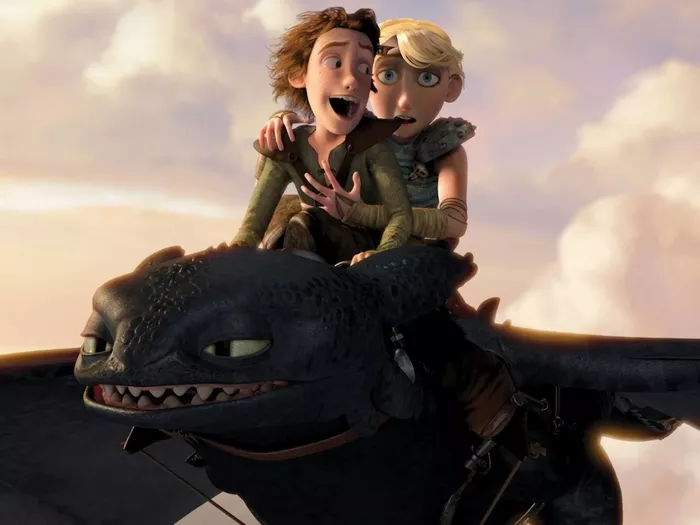As the anticipation for the live-action adaptation of How to Train Your Dragon continues to build, the filmmakers are confronted with a formidable challenge that threatens to impede the seamless transition of the beloved animated world to the realm of live-action cinema. The visual variety and distinctive designs of the dragons, central to the allure and narrative depth of the franchise, present a major obstacle in replicating their intricate details and emotive expressions in a realistic manner. Amidst the complexities of balancing visual fidelity with narrative coherence, the live-action adaptation grapples with the critical imperative of preserving the essence of the dragons’ enchanting presence while ensuring a seamless integration into the nuanced fabric of the live-action cinematic landscape.
1. The Conundrum of Visual Variety
At the heart of the adaptation lies the challenge of faithfully reproducing the diverse array of dragon designs that have come to define the rich tapestry of the How to Train Your Dragon universe. The animated films showcased a breathtaking spectrum of intricately crafted dragon species, each characterized by unique traits, physical attributes, and behavioral nuances that lent depth and complexity to the world-building narrative. Replicating this visual variety in the live-action adaptation entails a meticulous process of conceptualization and execution, requiring a delicate balance between visual fidelity and the demands of the live-action medium. Ensuring the seamless translation of the dragons’ diverse designs into a realistic and immersive visual spectacle remains a pivotal concern for the filmmakers as they navigate the intricacies of the adaptation process.
2. The Crucial Role of Dragons in the Narrative
Central to the challenge of visual fidelity is the indispensable role of the dragons themselves in the narrative arc of How to Train Your Dragon. Their presence serves as a linchpin in the intricate tapestry of the story, weaving a compelling narrative that hinges upon the symbiotic relationship between humans and dragons. To compromise the screen-time of these majestic creatures in a bid to mitigate the complexities of CGI costs would be to undermine the very essence of the franchise, robbing the narrative of its inherent magic and emotional resonance. The dragons, with their intrinsic ties to the thematic underpinnings of companionship, loyalty, and self-discovery, represent an indispensable component of the narrative fabric, necessitating a delicate balance between the demands of practical filmmaking and the preservation of the dragons’ narrative significance.
3. The Tightrope of Realism and Fantasy
The intricate process of translating the exaggerated dragon designs of the animated films into a realistic live-action format poses a daunting challenge for the filmmakers, as they navigate the fine line between visual authenticity and narrative coherence. Previous attempts at recreating fantastical creatures in live-action adaptations have often culminated in a dichotomy between non-emotive faces that fail to capture the essence of the characters and nightmarish designs that deviate from the spirit of the original source material. Balancing the intricate details of the dragons’ physical features with nuanced emotive expressions that resonate with audiences poses a formidable hurdle, requiring a nuanced approach to visual storytelling that reconciles the demands of realism with the vibrant allure of fantasy.
4. The Imperative of Preserving Narrative Essence
Amidst the complexities of navigating the challenges inherent in the live-action adaptation of How to Train Your Dragon, the imperative of preserving the narrative essence of the franchise stands as a guiding principle for the filmmakers. As they grapple with the nuances of visual adaptation and conceptual design, the preservation of the dragons’ intrinsic connection to the thematic motifs of friendship, courage, and self-discovery remains paramount. Beyond the intricacies of visual fidelity and technical execution, the live-action adaptation must endeavor to capture the heart and soul of the dragons’ narrative significance, ensuring that their presence continues to resonate with audiences on an emotional and visceral level. In this convergence of visual innovation and narrative resonance, the live-action adaptation of How to Train Your Dragon endeavors to transcend the boundaries of the animated realm and forge an enduring connection with audiences that transcends the limitations of the cinematic medium.
Conclusion
As the live-action adaptation of How to Train Your Dragon embarks on its journey to bring the enchanting world of dragons and vikings to life, the filmmakers are faced with the formidable task of surmounting the complexities of visual adaptation and narrative integrity. The challenges of replicating the visual variety of dragon designs, balancing their presence within the narrative, and reconciling the demands of realism with the allure of fantasy underscore the intricacies of the adaptation process. Through a meticulous interplay of conceptual innovation, technical prowess, and narrative resonance, the live-action adaptation aspires to capture the essence of the dragons’ enchanting presence, forging an enduring connection with audiences that transcends the boundaries of the cinematic medium and leaves an indelible mark on the annals of cinematic storytelling.

